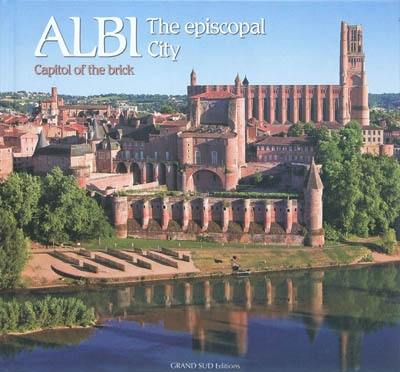
Paru le 01/04/2011 | Relié 95 pages
Tout public
historical presentation Jean-Louis Biget, Henri Bru
On the 31 st July 2010 in Brasilia, the members of the UNESCO world heritage comitee unanimously voted to include the episcopal City of Albi as a World Heritage site. It is a well-deserved consecration for a city with such a prestigious and unique history spanning twenty centuries.
To celebrate this event, Editions Grand Sud have selected the best photographs from their collections. It is fitting to use them in illustrating the presentation of the episcopal City of Albi, unique and grandiose like a gem in its setting of bricks by the waters of the Tarn.
The heart of the episcopal City features twin monuments : Sainte-Cécile cathedral and the episcopal palace, La Berbie. Forming the finest ensemble of brick architecture in France, these massive, haughty edifices were built after the crusade against the Albigensians, partly in response to the heretic Cathars.
The austere outside of the cathedral contrasts with the richly decorated interior. It is effectively the only cathedral in Europe to have been entirely painted inside. Visitors are inevitably impressed by the largest and most striking Last Judgement fresco in existence ; the only completely preserved cathedral rood-screen in France ; a choir whose statuary is of exceptional quality and lastly, the most extensive and earliest body of Italian paintings from the Renaissance period in France. During his visit to Albi the 17 th July 1838, Chateaubriand was impressed by the wealth of masterpieces and declared to the mayor of the city, who was accompanying him : « you have more than a church, you have a museum »
This setting reminds us that Albi was one of the great Renaissance centres in France, due of course, to the golden age of woad trade. Numerous Renaissance townhouses were thus built in the city, when it was one of the capitals of the « land of plenty » (15th - 16th centuries).
The city's old quarters have been well-preserved and form a richly authentic body, blending in harmoniously with the heart of the episcopal City. One of the first protected sectors created in France, the historic centre contains a wealth of treasures to be discovered by the visitor. Old Albi is not however, a museum-city ; its old quarters have been admirably rehabilitated and revived and are now adapted to modern-day living conditions.
Visitors, tourists and art lovers are quick to realise how pleasant and peaceful life in Albi can be. It is a must for tourists, « a city with a serene philosophy, particularly suited to the worship of Art » according to Jean-Jaurès, a famous Albi politician.
Jean-Louis Biget Henri Bru